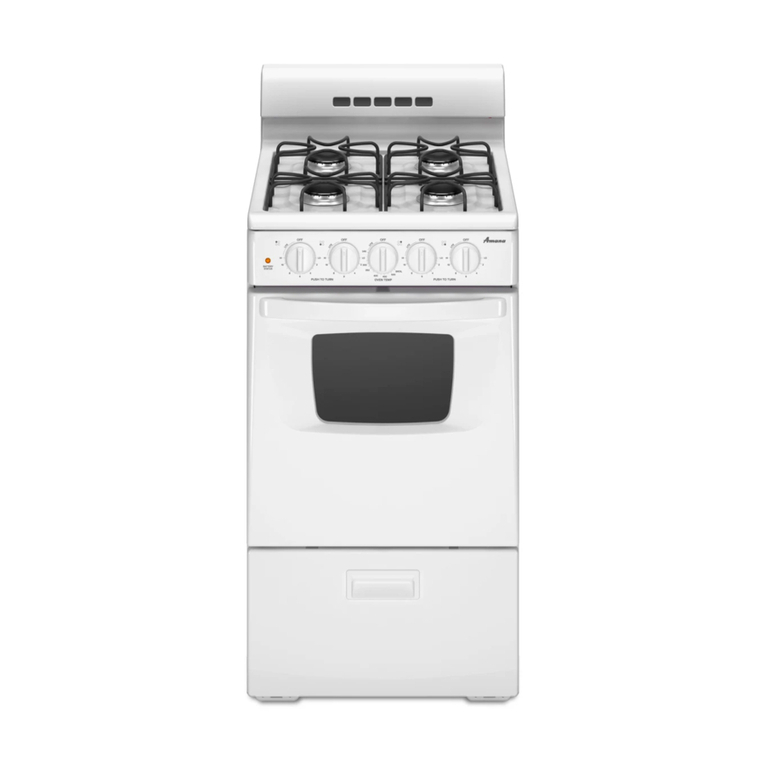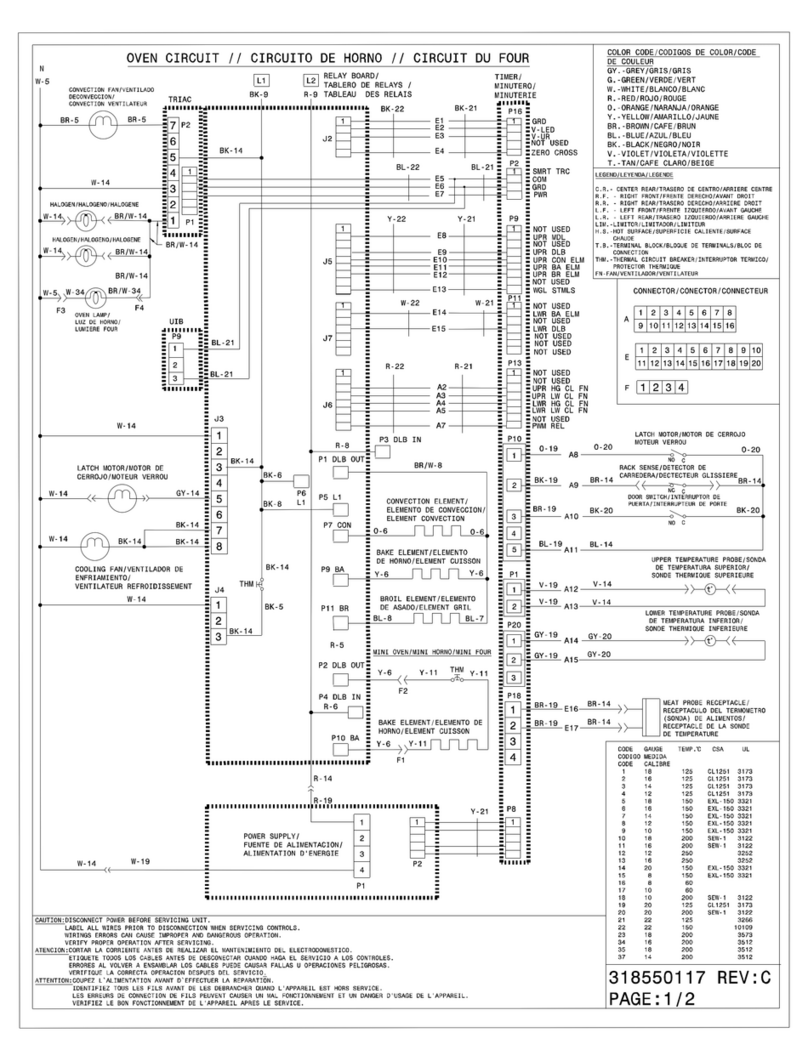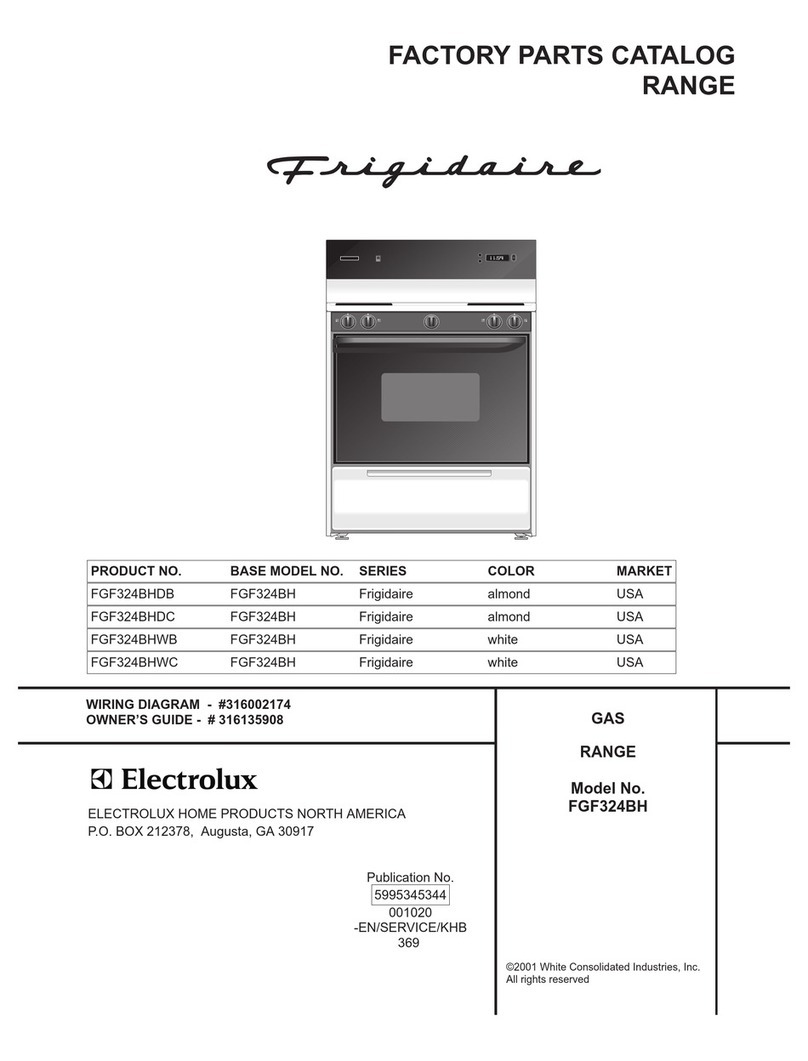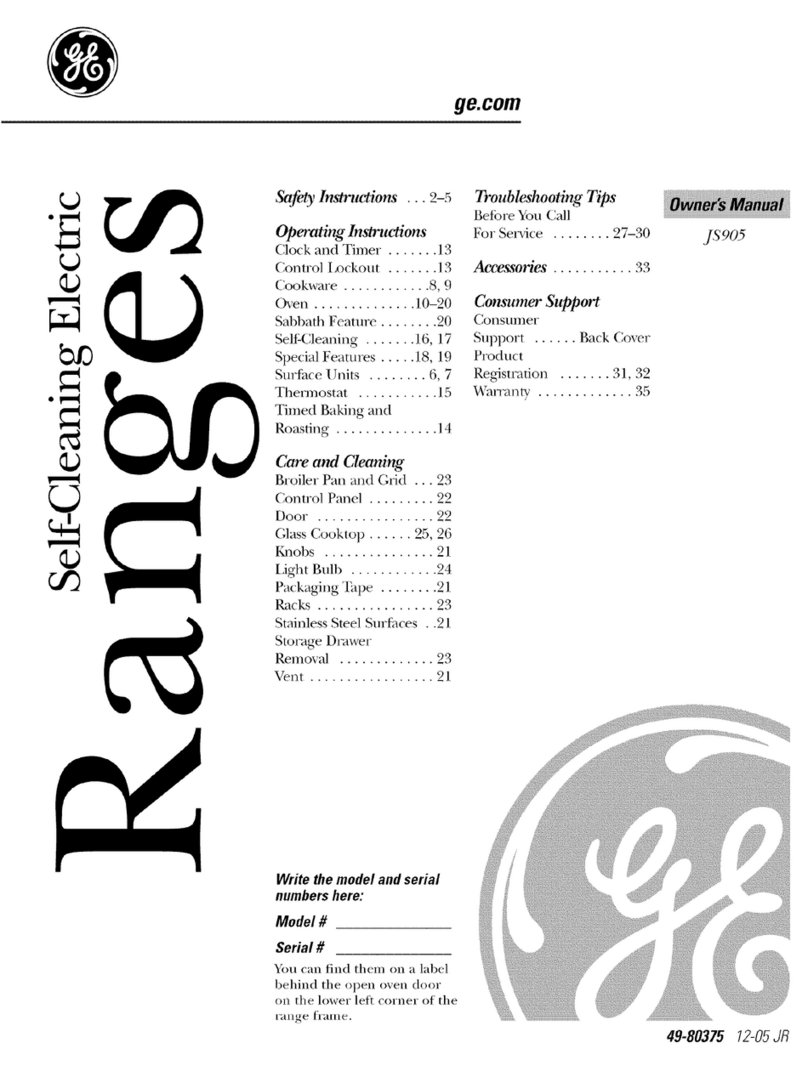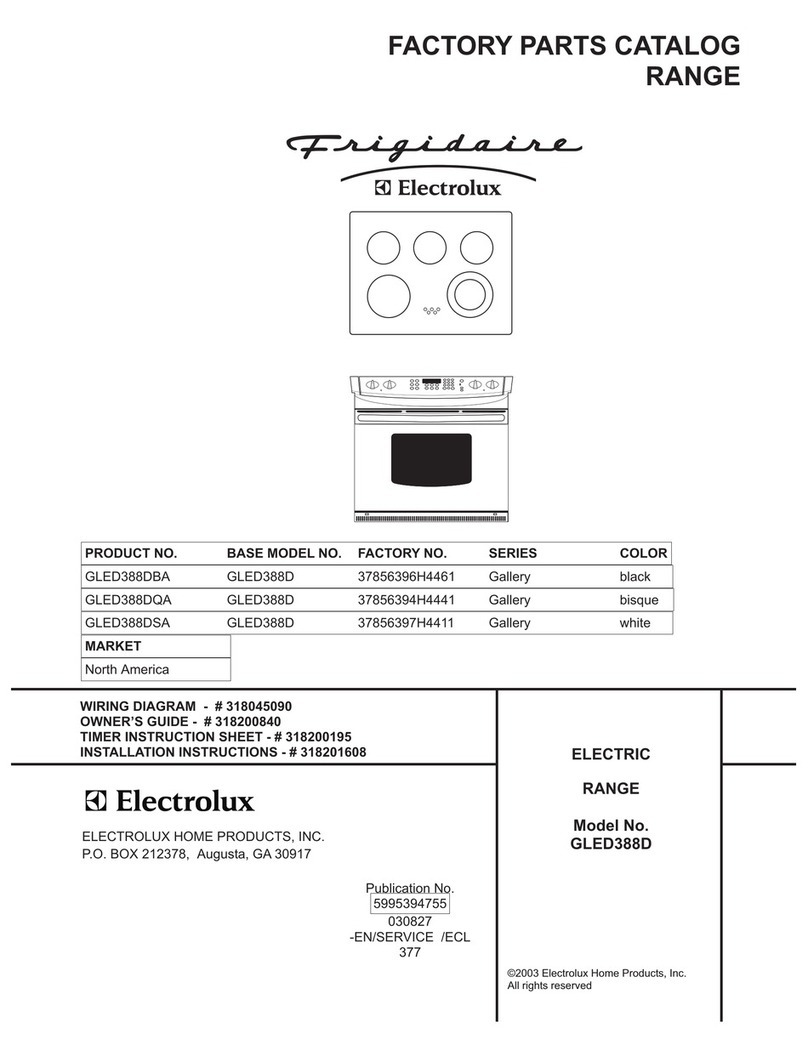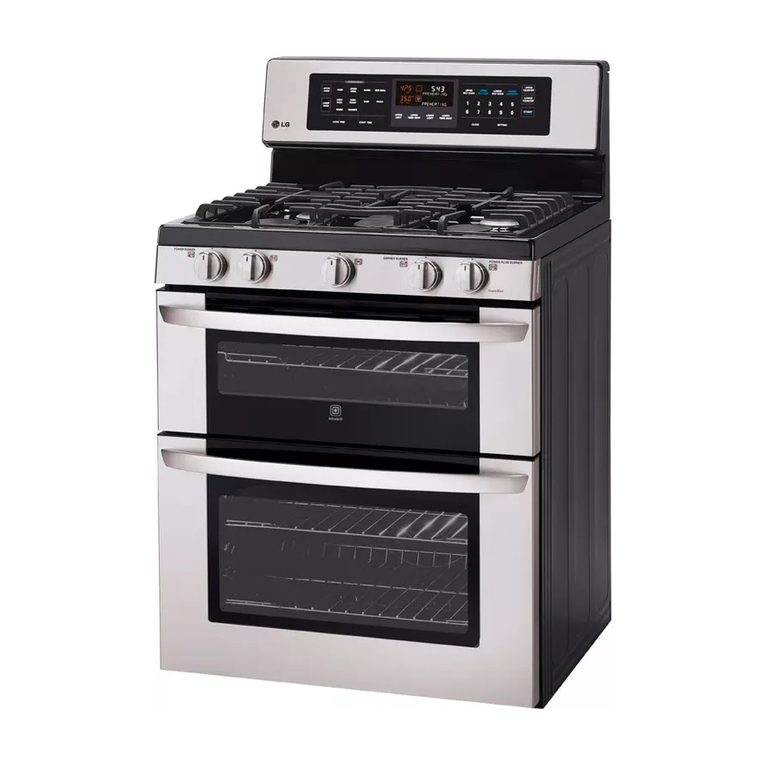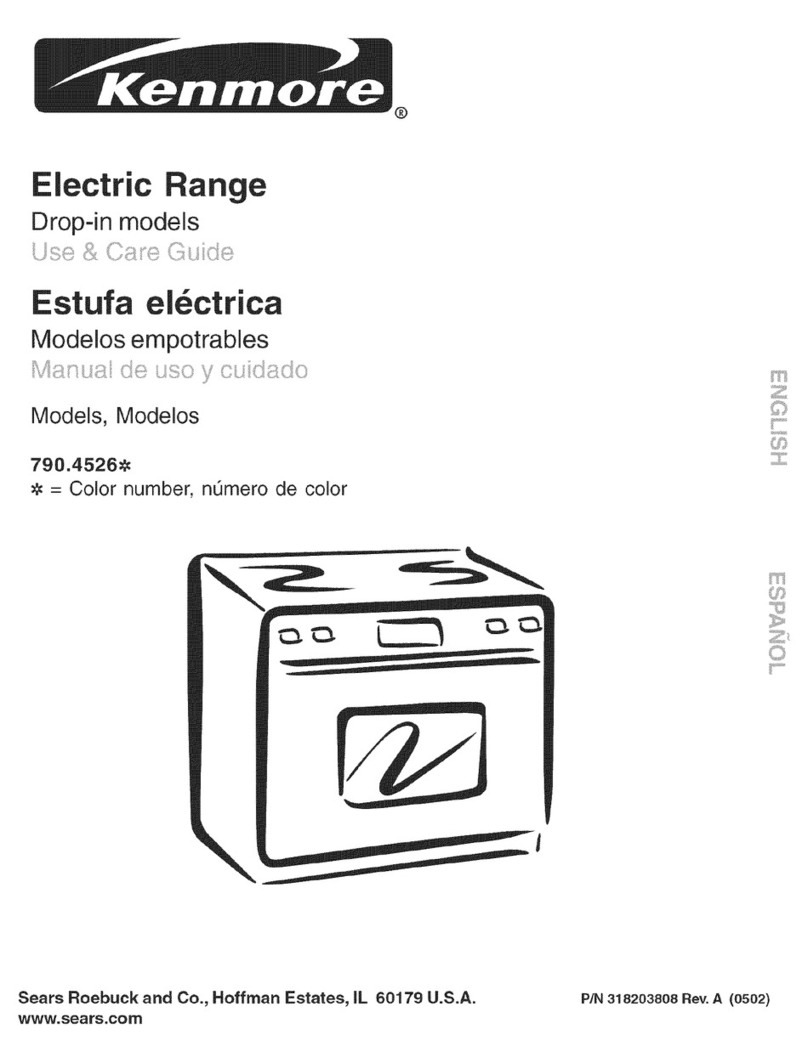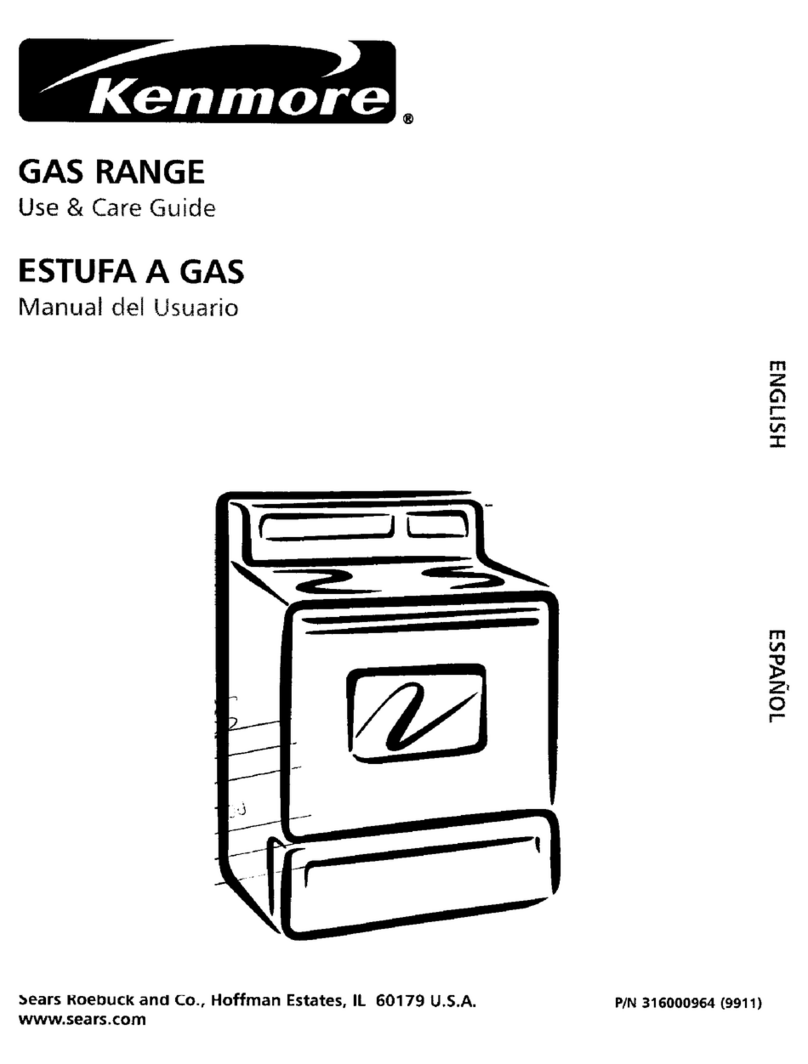TeraTron P4097 Installation and operating instructions

Application Note P4097
© TeraTron GmbH Page 1of 21 V1.1, 07.06.01
P4097 Application Note
Designing a RFID Reader/Exciter using the P4097 integrated circuit
TeraTron GmbH
All rights reserved. Reproduction in whole or in part is prohibited without the prior written consent of the copyright owner. The
information presented in this document is believed to be reliable and may be changed without notice. No liability will be
accepted by the publisher for any consequence of its use. The publication does not convey nor imply any license under patent-
or other industrial or intellectual property rights.
by TeraTron GmbH 2001

Application Note P4097
© TeraTron GmbH Page 2of 21 V1.1, 07.06.01
Contents
1. Introduction................................................................................................................................3
2. Function Principle.......................................................................................................................3
3. Hardware Design .......................................................................................................................4
3.1 Thermal considerations .........................................................................................................4
3.2 Power Supply .......................................................................................................................5
3.3 Filter design..........................................................................................................................6
3.4 Phase Lock Loop ..................................................................................................................8
3.5 µC Interface..........................................................................................................................9
3.6 Active antenna interface ........................................................................................................9
3.7 Printed circuit board ..............................................................................................................9
3.8 EMI Filter............................................................................................................................10
3.9 Antenna diagnosis...............................................................................................................11
4. Antenna Design .......................................................................................................................13
5. Software Design.......................................................................................................................15
5.1 Timing considerations..........................................................................................................15
5.2 Interface requirements.........................................................................................................15
5.3 Modes of operation..............................................................................................................17
5.4 Typical Schematic...............................................................................................................20

Application Note P4097
© TeraTron GmbH Page 3of 21 V1.1, 07.06.01
1. Introduction
This application note should give supplementary information about the integrated reader/exciter circuit
P4097.
The P4097 serves as interface between a transponder and a µController. The interface operates bi-
directional. The transponder is supplied with energy and data by on-off keying (OOK) of the carrier
signal and the transponder sends data back by modulating its quality factor (ASK/PSK).
The described circuit is a highly integrated solution for communicating with a transponder which is not
limited to a specific communication protocol and can read or write all kinds of transponder as long as
they use amplitude modulation. The amount of necessary external components is minimized.
Due to an integrated PLL there is no need for an external clock, the antenna circuit oscillates always
on its series resonance frequency. This, and the possibility to demodulate ASK and PSK signals
coming from the transponder, eliminate the “zero modulation” problem which occurs if the resonance
frequency of the transponder, the reader antenna and the driving frequency are mistuned by
component tolerances.
Furthermore the chip has been designed to support both, active and intelligent antenna. The
difference is the proximity of the controlling µC, either it sits close to the P4097 on the same PCB or it
is connected via a wiring harness where the number of wires is important and should be minimized.
Controlled by a serial interface the chip incorporates a power down mode as well as diagnostic
capabilities.
2. Function Principle
The interface between the transponder and the reader/exciter works like a transformer with very large
air gap and therefore a low coupling factor. The coupling factor can be visualized as ratio of the
received magnetic field by the transponder to the generated magnetic field by the reader/exciter. In
common applications this ratio is in the range of 0.5% to 5%.
The transponder is energized by the received magnetic field and consumes little power which is
simulated by the resistor Rtxp. When sending data the transponder switches a voltage clipping element
in its resonant circuit which can be seen on the reader/exciter side as a small change of the voltage at
the antenna “tab” point (the voltage between the inductor Lant and the capacitor Cant referenced to
ground).
Rltxp
Driver
Reader/Exciter
Demodulator
Dmod2
Ltxp
GND
Smod Lant
Transponder
CtxpRtxp Driver
to µC
Dmod1
Cant
Vant
Figure 1.: Transponder Interface equivalent circuit

Application Note P4097
© TeraTron GmbH Page 4of 21 V1.1, 07.06.01
Ltxp and Lant form the transformer, they are coupled by a mutual inductor which is not drawn. The
quality factor of both resonance circuits is determined by the resistors Rtxp, Rltxp and Rant which
represent the copper resistances, the eddy current losses and supply current of the transponder
circuit.
To achieve a large current in the antenna with a given supply voltage and a limited quality factor a
bridge configuration for the driver is chosen.
The transponder incorporates a parallel resonance circuit because a high voltage at low supply
currents is needed, whereas the reader/exciter is realized using a series resonance circuit because a
low supply voltage should cause a high antenna current. The series resonance circuit has a low
impedance at the resonance frequency and allows high driving currents (and therefore strong
magnetic fields) using a low driving voltage, the opposite is true for the parallel resonance circuit.
The voltage change at the reader/exciter antenna can be demodulated as it is modulated by the
different damping of the transponder circuit (as long as the coupling factor is not too small).
If the resonance frequency of the transponder and the resonance frequency of the antenna are
different the coupling factor between both coils becomes complex. This means that the modulated
signal is phase shifted against the carrier signal. If this phase shift reaches 90° the signal can not be
demodulated with a simple peak detector any more as the carrier is being pure phase modulated
without any amplitude modulation.
To avoid this so called “zero modulation problem” and therefore increase the allowed tolerances of
components the P4097 is able to detect amplitude-and phase modulation. The demodulation is done
by a sampling principle where the sampling phase can be switched between 0° and 90° relative to the
antenna driving voltage.
3. Hardware Design
3.1 Thermal considerations
Due to resistive losses in the antenna driver circuit and the supply current for the integrated analog
circuitry the chip is generating heat during operation which is increasing the junction temperature. As
mentioned in the data sheet this junction temperature shall not exceed 110°C to guarantee the
electrical characteristics of the chip and therefore the functionality of the whole circuit.
The following simplified schematic is useful for calculating the junction temperature during operation.
Ta
Rtja
Tj(+)
GND
Pv
Tj(-)
Ctja
GND
Figure 2.: Equivalent schematic for thermal calculations

Application Note P4097
© TeraTron GmbH Page 5of 21 V1.1, 07.06.01
In this circuit Ta is the ambient temperature, Tjis the junction temperature (to be calculated) and Ctja
and Rtja are the thermal capacitance and resistance as given in the datasheet for the chip soldered on
a 2 layer 1.5mm FR4 board with 35µm copper using a standard SO-16 footprint.
The current source Pvrepresents the power which has to be dissipated. It is calculated as follows:
AD
Ant
DDonDDVR
I
IVP ⋅
+⋅=
2
2
ˆ, with VSS = 0V
with the antenna current determined by:
loop
DD
Ant R
V
I⋅
Π
=4
ˆ
and the loop resistance given with:
ADAntloop RRR +=
Putting all above into an electric circuit simulation (or using the appropriate formulas) the junction
temperature even for pulsed operation at the antenna driver current limit can be calculated. The
surrounding circuit, ambient temperature and the duty cycle should be chosen that by no means a
junction temperature of 110°C is exceeded.
3.2 Power Supply
The circuit has to be supplied with a regulated voltage in the range given in the datasheet. The
consumed current in active mode can be calculated with:
DDonAntSup III +⋅
Π
=ˆ
2
The power supply should be able to supply this current without voltage fluctuations and ripple. This
ripple on VDD will be seen as modulation on the DEMOD_IN pin and can especially in the frequency
range of transponder communication not be distinguished from data send by the transponder. To get a
feeling for the supply voltage rejection of the circuit, as there will be always a certain amount of ripple
because of non perfect components, for a typical configuration the drop of the DEMOD_IN peak
voltage is 50mV if the VDD is decreased by 62.5mV. The transponder itself is modulating by a few tens
of mV. It can be seen that an insufficient power supply can easily cause malfunction or at least a
reduction in functionally and read/write range.
As a good design practice the power supply capacitor should be split and a 10µF capacitor with a low
ESR together with a ceramic 100nF capacitor are being placed in direct vicinity of the chip. A ripple
voltage smaller than 5mVSS in the frequency range between 100Hz up to 10kHz should be achieved
for best results. For higher or lower frequencies the susceptibility is reduced due to the receive band
pass filter.
The 10µF is needed to suppress the sourcing of antenna current into VDD in case the antenna driver is
being modulated. Too little capacitance together with a low power circuit will result in a lifted VDD in the
moment when the antenna is switched off as the voltage regulator can usually not sink current.
The 100nF ceramic capacitor supplies the output stage with the short current peaks which are drawn
by the pre-driver stage when the output level changes between VSS and VDD. The output transistors

Application Note P4097
© TeraTron GmbH Page 6of 21 V1.1, 07.06.01
themselves are equipped with a “break-before-make” circuitry and do not draw a cross current. The
capacitor is needed to suppress EMI.
The antenna is deenergized by diodes connected to VSS and VDD, the push-pull antenna drivers are in
tri-state if switched off. Therefore the voltage shortly after the driver has being switched off reaches
about VDD + 1V and VSS –1V for a few 125kHz cycles depending on the quality factor of the antenna.
Take care that the OUT pin, connected buffers or similar, must not switch high currents. Together with
a weak power supply this can form a resonant loop. The switched current modulates the supply
voltage which can be seen as amplitude modulation on the DEMOD_IN which is demodulated through
the chip to the OUT signal.
3.3 Filter design
The internal demodulation chain of the chip is shown below. The schematic is simplified but contains
all stages of interest.
OUT
CDEC_OUT
Vin
Cdc
GND CF
GND
GND
Filter GND
Mixer
DEMOD_IN
VCO
CDEC_IN
CDC
Cgnd
to Antenna Driver
Sampler
Cin
Cdec
Figure 3.: Simplified internal filter configuration

Application Note P4097
© TeraTron GmbH Page 7of 21 V1.1, 07.06.01
The capacitive voltage divider coming from the antenna tab point to the DEMOD_IN pin should be
dimensioned so that the voltage level never exceeds VSS + 0.5V or VDD –0.5V. Above or below these
thresholds the signal will be clipped and the modulation of this signal is lost. On the other hand the
signal should not be smaller than necessary because the absolute level of modulation should be as
large as possible to achieve a maximum system performance.
When choosing the values and the tolerance class for this voltage divider (Cin and Cgnd in the drawing)
all component tolerances and the variation of antenna quality and resonance frequency over
temperature and part variations should be regarded.
The low pass and high pass filter frequency of the band pass filter following the sampler can be
chosen by the external capacitors connected to CDEC and CDC. They should match with the data
rate and the modulation spectrum of the used transponder. Recommended values are given in the
datasheet.
The low pass filter frequency of the mixer which controls the VCO can be chosen by the external
capacitor connected to CF. The smaller the value is, the faster the settle time is to find the series
resonance of the antenna circuit after starting the antenna driver.
When the capacitance value is selected too small the VCO follows the phase modulation which is
generated by a transponder with a detuned resonance frequency (zero modulation effect). This affects
the phase demodulation and is only recommended if the sample point of the demodulator is always
set on amplitude demodulation (bit#1 set to “0”).
Recommended capacitor values for ASK and ASK/PSK are given in the datasheet.
When the external clock mode is used this capacitor is not needed and the CF pin should be
connected to ground.
The gain of the involved amplifiers can be selected by using bit#6 and bit#7 of the serial shift register.
The influence of different gains should be tested by qualification. In general the sensitivity is increased
with higher gains but the chance of signal clipping and therefore the loss of functionality is also
increased. To easy the gain selection the voltage levels at CEDEC_OUT, CEDEC_IN and CDC can
be monitored. Clipping may occur above VDD –0.5V or below VSS + 0.5V and shall be avoided
considering all tolerances and drifts.
The comparator threshold and its hysteresis can not be modified externally. They are derived from the
internal reference voltage which shall be buffered properly. Voltage ripple on the ground pin of the
connected capacitor relative to the VSS pin affects the system performance seriously.
If the internal PLL is used for clock generation the ASK and PSK channel are different in their
sensitivity if a certain bit failure rate is used to determine whether the received signal is valid or not.
The reason for that is the phase jitter of the PLL which generates noise when the phase of the signal
is demodulated. This noise causes a jitter on the pulse length of the digital output.
In general the communication range for the PSK channel is slightly reduced in comparison with the
ASK channel when using the PLL. On the other hand the PSK channel is needed in PLL mode only
when very large tolerances of transponder-and antenna resonance frequencies have to be covered.
When a low jitter external clock is used the performance of the ASK channel and the PSK channel is
the same.
The jitter of the demodulated signal as function of signal strength with the gain as parameter for the
ASK and PSK channel can be seen on the figure below.

Application Note P4097
© TeraTron GmbH Page 8of 21 V1.1, 07.06.01
Red trace: Amplitude demodulation Circle: Gain 960
Blue trace: Phase demodulation Square: Gain 480
Triangle: Gain 240
Figure 4.: Jitter as function of modulation depth
The diagram shows that the sensitivity is typically about 0.5mV, 1mV and 2mV for a gain of 960, 480
and 240. If the jitter is regarded a gain of 480 achieves the best result for both, the phase and the
amplitude demodulation.
3.4 Phase Lock Loop
With the help of the PLL the antenna is driven with it’s series resonance frequency. The input signal
for this PLL is the signal at the DEMOD_IN pin, the same signal which is demodulated.
Therefore the phase of this signal relative to the antenna driver signal is important as the PLL will not
lock correctly with shifted signals. This is the reason for choosing a capacitive voltage divider for the
DEMOD_IN pin as the phase shift is not affected by parasitic capacitance caused by the PCB tracks
or the pin to pin spacing.
For the same reason the polarity of the ANT1 and ANT2 antenna driver pins is important. The PLL
locks only if the ANT2 pin is connected to the DEMOD_IN pin via the series resonance capacitor, not
the via the coil. Swapping ANT2 and ANT1 or the capacitor and the inductor causes a 180° phase shift
and the PLL is not able to lock which means the antenna is driven on the wrong frequency.
The lock frequency of the PLL is preserved as analog voltage in the external capacitor during the
modulation of the antenna driver. When the antenna is switched on again this hold mode is switched
off after a few 50µs. The antenna voltage has reached a steady state then and the PLL can continue
working with the same voltage level as before the modulation. If the antenna is continuously
modulated with a frequency of more than 2.5kHz the chip is not able to leave this hold mode.
Therefore the frequency of the PLL will drift away as the capacitors are discharged by leakage
currents. This is a process with a time constant at room temperature of minutes.
0%
2%
4%
6%
8%
10%
12%
14%
16%
18%
20%
0,0 0,5 1,0 1,5 2,0 2,5 3,0 3,5 4,0
Modulation [mV]
Relative Standard Deviation of Pulse Width

Application Note P4097
© TeraTron GmbH Page 9of 21 V1.1, 07.06.01
3.5 µC Interface
The inputs of the P4097 are IN, CLK and EC. All three pins are pulled down by a resistor with a typical
value of 50kΩ. The switching threshold is typical 50% of VDD. However, when using the worst case
values the connected µController should be able to source at least 140µA at VDD = 5V to achieve a
proper logic high level. This requires a RDSon of the p-channel FET (or a pull up) in the µController with
a value of less than 10.7kΩ.
The output OUT of the P4097 is a push-pull type with a worst case RDSon of about 500Ω. A typical
value at room temperature is between 150Ωand 200Ω.To achieve proper logic levels the load
resistance should be above 4.9kΩ. Due to the limited sink or source current the output is short circuit
protected against VSS and VDD.
Care should be taken when the chip is not interfaced directly to a µController. The slew rate of the
clock signal should be high enough to achieve rise or fall times below 50ns. The chip is generating a
current spike during the polarity change of the 125kHz carrier signal (as any CMOS output) which can
crosstalk via ground into the clock signal. As the input does not incorporate any hysteresis only a
sufficient rise time guarantees that a clock pulse is not counted twice. Connected directly to a
µController the rise time should never cause a problem if a direct connection without additional filter
capacitors is chosen.
3.6 Active antenna interface
When the IN and OUT pin are connected together to form with the CLK signal a two wire interface this
configuration is called active antenna. It is advantageous if the antenna interface is a stand alone unit
without a µController. The wiring harness is then reduced to two supply wires plus two wires for the
digital interface.
Because the OUT signal would modulate via the IN pin the antenna driver, both signals must be
decoupled via the data direction bit of the serial interface. This bit is enabled via the EC pin which is
not used if the P4097 is running with its own PLL and without an external clock.
The data direction bit is switching the interface between input and output. If in input mode the OUT pin
is pulled to ground. If in output mode the IN pin has no function but the antenna driver stays switched
on. This mode is left by an interface reset.
A simple transistor stage can form the interface to the wiring harness as shown in the chapter “modes
of operation” later in this application note.
3.7 Printed circuit board
To achieve the maximum communication range the following design rules for the printed circuit board
should be regarded.
The VSS pin is the reference level for all analog signals. The antenna driver current which is sourced
out of the DVSS pin shall not have a common path with these analog signals.

Application Note P4097
© TeraTron GmbH Page 10 of 21 V1.1, 07.06.01
150nF
CF
10nF
DEMOD_IN
VSS
from Ant.
CAGND
GND
100nF1.5nF
DVSS
CDC
Figure 5.: Ground signal layout
The buffer capacitors should be located close between the DVDD and DVSS pins. Any voltage drop due
to copper resistance or track inductance will be seen via the antenna on the DEMOD_IN pin and will
be demodulated. This should be regarded for the larger electrolytic capacitor as well as for the
ceramic capacitor. Using two sets of capacitors makes it easier to place and route them on the circuit
board. One set is buffering the high current supply DVDD and DVSS, whereas the other capacitors (or
just the ceramic one) buffers the analog supply VDD and VSS.
The signal DEMOD_IN is very susceptible against capacitive coupling of noisy tracks. The capacitive
voltage divider should be located close to the input pin and connected to a proper analog ground. A
ripple voltage or a voltage drop relative to VSS is coupled into the DEMOD_IN pin due to the capacitor
ratio much stronger than the useful signal coming from the antenna.
The CDEC capacitor which connects the sampler with the filter is susceptible against capacitive
coupling of noise. The capacitor should be located close to the chip and the tracks should be short
and not close to other traces with fast changing voltage levels.
The antenna connection, if an external antenna is used, should be bypassed with two small ceramic
capacitors to ground close to the connector. This suppresses high frequency voltages to ground which
are picked up by the wiring harness and reduces the radiation out of the circuit into the wiring harness.
Other connector pins which are connected to a wiring harness should be treated similar. The ground
plane to which these capacitors are connected should be routed carefully to achieve a low impedance
for high frequencies.
Unused pins except the CF pin in external clock mode can be left open as the inputs are internally
pulled to ground and outputs are push-pull types without tri-state mode and therfore defined voltage
levels.
3.8 EMI Filter
In applications where the functionality even under the influence of strong electromagnetic fields is
required, additional filter circuitry for connecting the antenna coil with the P4097 is recommended. The
filter shown below suppresses high frequent voltages which could be picked up by the antenna cable
or the antenna itself. Because of the –60dB level of the useful transponder signal in relation to the
125kHz carrier frequency the communication is by nature susceptible against electromagnetic
interference.

Application Note P4097
© TeraTron GmbH Page 11 of 21 V1.1, 07.06.01
GND
DEMOD_IN
1k100pF
10uH 1.5nF
GND
100pF
ANT2
GND
ANT1
GND
10uH
68pF
10R
Antenna
100pF
100nF
1.5nF
Antenna
Figure 6.: EMI filter circuit
If the quality factor trimming resistor value is large enough it may be split equally on both antenna
connections and may replace the 10µH inductors. The susceptibility against interference is increased
compared to the inductor solution, especially for higher frequencies, but may be still sufficient for the
given application.
The short circuit protection is done in this example with the capacitive decoupling of both antenna
drivers. The smaller capacitor determines the resonance frequency together with the inductance of the
coil. It is a low tolerant, low temperature drift, high voltage type. The larger capacitor should be in
relation 10 to 100 times larger so that a low voltage and high tolerance type can be used. The larger
the capacitance, the lower is the influence on the resonance frequency.
3.9 Antenna diagnosis
The P4097 contains three kinds of inspecting the antenna circuit.
Both output stages are tested internally for correct voltage levels. The driven voltage level and the
actual voltage level at the output pin are compared each cycle and the output stage is switched into tri-
state mode when the output does not reach the assumed voltage. This feature protects the P-and N-
channel driver transistor against destruction by short circuit to VSS or VDD. The occurrence of these
short circuits can be read back by the connected µController through the serial shift register.
A typical current threshold for switching off the output stage is 600mA. If the short circuit happens
during normal operation it will be switched off after 4µs at the latest when running with 125kHz carrier
frequency. If the circuit is powered up into a short circuit the current will be switched off as soon as the
internal (PLL) or external (EC) clock is present. In case the chip is using its PLL the short circuit path
is interrupted after about 300µs. If the circuit has to deal with such states the power supply has to be
designed appropriate as the current can reach up to 1.5A. The power supply requirements are
reduced by inserting the series capacitor as described in the chapter above.
The drivers stay switched off until they are activated at the next writing of the serial shift register.

Application Note P4097
© TeraTron GmbH Page 12 of 21 V1.1, 07.06.01
The signal at the DEMOD_IN pin does reach a certain voltage level during normal operation. It is the
antenna tab voltage decreased by an capacitive voltage divider. If this voltage is lower than a fixed
limit shown in the datasheet the input status bit is set. This indicates a broken antenna or connection
to the antenna, or in general a too low quality factor of the antenna.
The status of the phase lock loop is outputted in a third bit of the serial shift register. It shows the
mistuning of the antenna loop, which means the PLL could not lock to a frequency in a certain range.
This shows a broken or short circuited antenna connection or wrong values for inductance or
capacitance of the antenna loop, or in general a wrong resonance frequency of the antenna.
All three bits are not logical connected with each other. A single failure can cause one or more failure
flags to occur. The pattern has to be interpreted by the µController if necessary.
Failure mode
Antenna Status
Input Status
PLL-Status
Short circuit of ANT1 to VSS 1X0
Short circuit of ANT1 to VDD 1X0
Short circuit of ANT2 to VSS 111
Short circuit of ANT2 to VDD 111
Broken connection to ANT1 011
Broken connection to ANT2 011
Capacitor value too large 0X1
Capacitor value too small 0X1
Inductor value too large 0X1
Inductor value too small 0X1
Loop resistance value too large 000
Loop resistance value too small X10
Antenna voltage is being modulated (no failure) 010
The X’s are showing an undefined status. Depending on the safety margin of the design, the bit could
be read as “0” or “1”.
If the antenna driver is switched off during communication with the transponder, the PLL will loose is
tuning state depending on the time constant determined by the external capacitor connected to the pin
CF. If the driver is switched off for a long time the PLL-Status bit will show a “1”.
Testing of the antenna status bits should only be done if the antenna voltage is at its normal constant
level. This means it shall not be tested in power down mode, during write pulses and in settling phases
because the diagnostic information might be unclear.
A more precise antenna diagnosis can be done by using the OUT pin as clock output. By setting the
data/clock bit in the serial shift register the actual PLL frequency divided by 32 can be seen at the
OUT pin. The connected µController can measure with a pulse counting or gated timer the exact

Application Note P4097
© TeraTron GmbH Page 13 of 21 V1.1, 07.06.01
resonance frequency and compare it with given limits. These limits are usually much more narrow
than the PLL locking range is.
4. Antenna Design
The reader/exciter antenna is a series resonance circuit which consists of an inductor, a capacitor and
a resistor. The characterizing variables of this circuit are the resonance frequency fres and the quality
factor Q.
The resonance frequency is calculated with:
CL
fres ⋅⋅Π⋅
=2
1
The quality factor is given with:
RLf
Qres
⋅
⋅
Π
⋅
=2
The resistor R should be measured at the resonance frequency for the case that magnetic or electric
conductive material is located in the vicinity of the coil. R is then the sum of resistive, eddy current and
hysteresis losses. Furthermore the resistive losses are the sum of the copper resistance of the
antenna, possibly the parasitic resistance of EMC coils and the resistance of the antenna driver, given
in the datasheet as RAD.
For measuring the value of Q the voltage over the inductor or the capacitor can be used. The formula
is given as:
DDLVQV⋅
Π
⋅=4
ˆ
Not only the voltage over C and L are linear dependant from Q, also the current through the series
resonance circuit depends from Q.
R
V
IDD
Ant ⋅
Π
=4
ˆ
This current should be chosen with regard to the datasheet, there are three limits to pay attention to,
one for continuous operation, the other for pulsed operation and the third is the resulting power
dissipation affecting the chip temperature. Violating these limits will affect the performance or the
lifetime of the chip.
To get a feeling for the antenna parameters the current as function of Q for different quality factors is
drawn in the figure below.

Application Note P4097
© TeraTron GmbH Page 14 of 21 V1.1, 07.06.01
Figure 7.: Antenna peak current as function of quality factor with L as parameter
The goal is to achieve a maximum of magnetic flux to gain a large reading range. The flux is
proportional to the current and proportional to the number of windings, but the number of windings are
proportional to root of the inductivity.
To optimize the reading range the antenna current should be therefore maximized. With a given
quality factor the necessary inductivity can be found in the diagram. The inductivity as parameter is
200µH, 500µH, 1mH, 2mH and 5mH from top to bottom.
The quality factor should be as high as possible but is limited by the susceptibility against component
value deviations and the necessary bandwidth for the communication. Usually quality factors are in the
range of 10 to 15.
To maximize the current instead of maximizing the inductivity has the other advantage of avoiding
excessive high antenna voltages. This makes it easier and less expensive to find the appropriate
electronic components and results in a smaller division factor for the DEMOD_IN voltage. Therefore
the modulation ratio is kept larger.
To achieve the lowest cost for the antenna the needed resistance for the desired quality factor could
be integrated as copper resistance in the antenna. However the copper resistance has a large
temperature dependency and a large absolute tolerance. If the system qualification shows that this
tolerance in the quality factor can not be tolerated the antenna wire size has to be increased and an
external low tolerant resistor has to be used. The usage of magnetic conductive but electrical
insulating material, like ferrite, is another method to reduce the quality factor at a given geometry.
If the antenna coil is not located on the same PCB as the reader chip, it is recommended to use a
cable to the antenna which is not longer than 50cm. If a longer connection is necessary a shielded
cable may be required or the system performance will be reduced.
0,00
0,05
0,10
0,15
0,20
0,25
0,30
0,35
0,40
5 7 9 11 13 15 17 19
Quality Factor [-]
Peak Current [A]

Application Note P4097
© TeraTron GmbH Page 15 of 21 V1.1, 07.06.01
With the length of the connection the susceptibility against EMI is increased. Also the electrical
parameters of the cable and their tolerances or drift over temperature are becoming important with
increasing length.
For architectures where 50cm are by far exceeded the use of an active antenna is recommended. The
digital signals can be carried over a large distance as susceptibility against injected noise is reduced.
5. Software Design
5.1 Timing considerations
When writing software to interface with the P4097 which is running in PLL mode without an external
clock it is important to have in mind that the antenna frequency which is the clock for the transponder,
is generated by a PLL and the frequency therefore depends on the component values and their
deviation over temperature and manufacturing tolerances.
If the resonance frequency can shift more than about 2% over tolerances and temperature it is
strongly recommended to achieve a reliable reader design to measure the actual resonance frequency
by software and do the complete read and write timing with the transponder relative to the measured
frequency.
For that reason the serial interface can be programmed with bit#3 of the command register to output
the PLL frequency divided by 32. For some transponders this is already the bit length.
The exact value for the allowed tolerance in resonance frequency depends on the used transponder.
The more stringent it’s timing requirements is or the more bits are transferred without synchronization
the lower the allowed tolerances are.
Errors due to desynchronization are hard to find and are often dependent on the data value which is
sent or received. The effect could be that some fix code transponders could not be read, depending on
their serial number, or crypt code transponders do not work with certain random numbers. Such a
“random” behaviour is not easy to debug.
To avoid such errors and to be able to use less expensive and higher tolerance components it is a
good design practice to derive all timings from the transponder clock which is the antenna frequency.
5.2 Interface requirements
As described in the datasheet the signals CLK and IN are used to enter data into the serial interface
and do the interface reset. Because of this combined functionality it is important to control the rising
edges of both signals.
IN
ts
CLK
Figure 8.: Entering data into the serial interface

Application Note P4097
© TeraTron GmbH Page 16 of 21 V1.1, 07.06.01
The figure above shows how to enter the value “1” into the serial interface. IN has to be high at least tS
before the rising edge of CLK. The value for tSis given in the datasheet. If this time is chosen to small
or even negative (CLK before IN) the data might not be accepted or the serial interface reset could be
activated. The relative position of the falling edges is uncritical.
The interface reset with which every serial communication starts is done as defined in the specification
when a rising edge on IN happens while CLK is high.
tres
CLK
ts
Int_Res
IN
Figure 9.: Interface reset
It is recommended that the rising edge on IN appears at least a settle time of tsafter the rising edge of
CLK. The internal reset is active as long as both signal are high. This time should exceed the
minimum tres given in the datasheet. The falling edges of both signals are uncritical, it can have any
order.
It is necessary to start each writing to the serial shift register with a interface reset. By mistake the
P4097 shift register and the connected µController could not be in phase due to EMI or ESD influence.
In this case the written or read information would be wrong and it is difficult for the µController to figure
this out. For that reason the P4097 is designed to be synchronized at each serial transmission with the
interface reset.
.
Data 1
.
Reset
.
CLK Reset Clock 1 Clock 2
IN
Figure 10.: Start of communication
A valid serial command to power up the chip is shown below. It starts with a interface reset to bring the
IC in the command state. Because the IN pin has to be low to achieve this a momentary modulation of
the antenna driver can not be avoided.
The In pin should be pulled high between the 9th and the 12th clock pulse to avoid modulation at the
end of data transmission.
The pause between the first 8 bits which are input for the chip and the last 3 bits which are the output
should be made longer as shown as due to the analog settle time the outputted data might be wrong.

Application Note P4097
© TeraTron GmbH Page 17 of 21 V1.1, 07.06.01
The recommended pause length depends on the written data and is described in the specification of
the P4097. Violating this pause may cause wrong status bit information. Writing the same data in the
shift register after the recommended pause duration again without a delay between the 9th and 10th
clock cycle results in a correct status output.
26-Jan-01
13 34 43
10 s
5.0 V
10 s
2.00 V
10 s
5.0 V
Channel 1: CLK
Channel 2: IN
Channel 3: ANT2
Figure 11.: Serial command sequence
5.3 Modes of operation
The P4097 is able to be used in three different system architectures or modes.
Clock source
Internal PLL External clock
Direct Interface yes yes
µController location Active Antenna yes no
The clock for the antenna can be internally generated by a PLL. The frequency is then determined by
the resonance frequency of the antenna series resonance circuit. The other possibility is to connect an
external clock to the EC pin and drive the antenna with a fixed frequency. In this case the EC pin can
not be used to switch the meaning of bit#3 of the serial shift register. Therefore the combination of

Application Note P4097
© TeraTron GmbH Page 18 of 21 V1.1, 07.06.01
external clock (the EC pin is used) and active antenna (data direction of bit#3 must be used) is not
feasible.
The interface to the µController can be a three wire or a two wire connection. The two wire interface
should reduce the number of wires if the P4097 is connected via a wiring harness to the µController.
This configuration is called active antenna. The configuration with the µController on board is called
intelligent antenna.
One of the three possible architectures is the direct µController interface. This requires a µController
close to the P4097 which is connected via a three wire interface to the chip.
5V
GND GND GND
GND
P4097
1
10
2
3
5
4
6
7
8
9
13
12
11
14
15
16
VSS
CLK
ANT1
DVDD
DVSS
ANT2
VDD
DEMOD_IN
CDEC_OUT
CDEC_IN
CAGND
OUT
IN
CF
CDC
EC
from µC
GND
from µC
to µC
Figure 12.: Direct µController interface
The communication to the chip (writing into the serial shift register) is done synchronously by using the
CLK signal. Diagnosis information is transmitted at the second half of writing into the serial shift
register to the µController by using the CLK signal as well.
Data from the transponder through the chip are transmitted asynchronously, without using the CLK
signal, depending on the used transponder, for example Manchester coded. In this configuration the
EC pin can be left unconnected as it is pulled internally to VSS. This configuration uses the PLL for the
antenna clock generation.
The second architecture is the direct µController interface with external clock. The difference is the
usage of a fixed antenna frequency which does not depend on the series resonance.

Application Note P4097
© TeraTron GmbH Page 19 of 21 V1.1, 07.06.01
GND
to µC
GND
from µC
GND
P4097
1
10
2
3
5
4
6
7
8
9
13
12
11
14
15
16
VSS
CLK
ANT1
DVDD
DVSS
ANT2
VDD
DEMOD_IN
CDEC_OUT
CDEC_IN
CAGND
OUT
IN
CF
CDC
EC
GND
from µC
5V
from µC
GND
Figure 13.: External clock
The division factor between EC pin and antenna driver is 32 and fixed. Therefore the external clock
has to have a 4MHz frequency when using a 125kHz transponder. 125kHz is then the carrier
frequency for the data and energy transmission. Care should be taken when routing this high
frequency signal from the source to the chip. To avoid electromagnetic emission the clock source
should be located close to the P4097. The slew rate should not be higher than necessary.
If a crystal is shared between the µController and the P4097, the additional capacitance of the trace
and the input should not be disregarded to achieve a stable start up. The input capacitace is given in
the datasheet. Capacitive coupling in of high frequency signals must be avoided.
Any jitter on this signal reduces the system performance, µController using a PLL for clock generation
have to be checked carefully on their clock signal stability.
The CF pin is connected to ground as the internal VCO is not needed.
The third possible architecture is called active antenna. The µController is connected via a wiring
harness with the P4097. For that reason the IN and OUT pins are connected together and share one
wire. For a proper communication the EC pin must be connected to VSS and the bit#4 shall be set to
“0”. The internal PLL has to be used and the IN and OUT have to be suppressed mutually using the
bit#3.
A clock buffer has to be used to achieve the desired switching thresholds and rise times and to
suppress noise on the line by using a input hysteresis.

Application Note P4097
© TeraTron GmbH Page 20 of 21 V1.1, 07.06.01
GND
5V
GND GND
Input
Bidirectional
GND
GND
P4097
1
10
2
3
5
4
6
7
8
9
13
12
11
14
15
16
VSS
CLK
ANT1
DVDD
DVSS
ANT2
VDD
DEMOD_IN
CDEC_OUT
CDEC_IN
CAGND
OUT
IN
CF
CDC
EC
GND
5V
12V
Figure 14.: Active antenna
Because the OUT pin can not be switched to tri-state a wired “or” connection must be used. A logic
low signal at the OUT pin should not influence the voltage level on the bi-directional communication
line. If the OUT pin is switched to low the line is used as input.
5.4 Typical Schematic
A typical circuit for interfacing a transponder may look like shown below.
Table of contents

